What is the most effective laundry bleach. SARMA Bleach - “Budget-friendly Oxygen Bleach!! We understand the composition. Is it worth paying more? A photo."
For a very long time I bought Vanish as a means to enhance washing powder. Six months ago, thanks to Airek, I learned about Sarma powders and bleach. I looked in the store, compared the composition and, of course, bought it. Look...
~~~~~~~~~~~~~~~~~~~~~~~~~~~~~~~~~~~~~~~~~~~~~~~~~~~~~~~~~~~~~~~~~~~~~~~~~~~~
SARMA- oxygen bleach with antibacterial effect. It is suitable for washing all types of fabrics, effective at any temperature.
Another possibility is to add extra softener to the washing machine and dispense soft water detergent. So you don't need extra surfactants and other ingredients. Some detergents are already prepared for your water hardness. Thus, they are available for soft, medium and hard water.
Softener softens your clothes and fabrics. There are three known softeners: zeolite, polycarboxylates and citrates. Zeolite is the most widely used softener. It can be easily filtered with treatment facilities, so it is not dangerous from an environmental point of view. However, it is and remains a mineral.
The cost of a pack of 500g is about 60 rubles, Vanish with the same volume costs 3 times more. It turns out questionable savings.
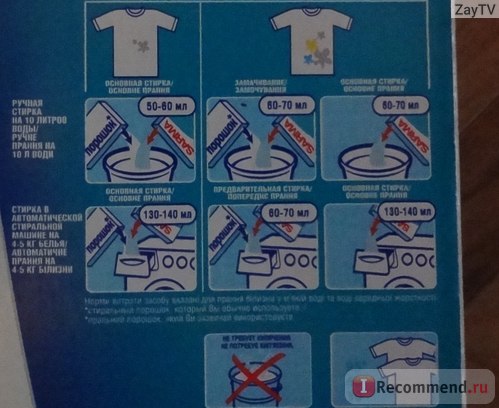
You need to add it 2-4 times more than it is recommended to add Vanish.

Zeolite softens water, but not your diapers and clothes. The only thing zeolite can do is capture and exchange free ions. However, the ions do not disappear. And he has no way to make the linen softer. And also: after the main wash, during which surfactants, softeners and oxygen bleach their work, there is a rinse cycle in which large charges of water are again used that have not been softened.
If you have soft water, do not use additional softener. If you have medium to hard water, you should follow the dosage recommendations. Buy a decalcifier for your softener. Or: Take citric acid as an emollient. Decalcifiers are usually acids. They are used for cleaning, or they are placed in the washing machine, cooker or a coffee machine every 2-3 months to dissolve the resulting lime and float into the water. The best known decalcifiers are citric acid, acetic acid, and lactic acid, which are available in liquid or powder form.
I have not tried to remove very old stains, but it removes fresh dirt very well. And if you qualitatively remove stains during the first wash, then there will be no old stains.
Composition:
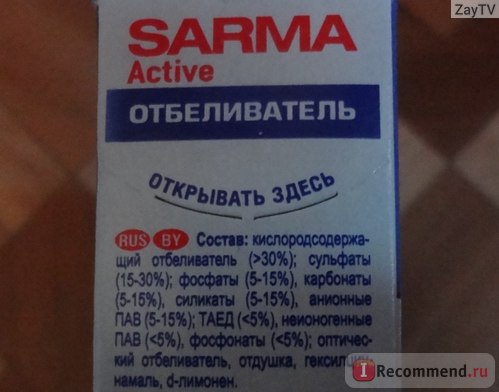
It contains oxygen bleach, surfactants and a bunch of phosphates.
Even though acid lime can dissolve very well, it is not suitable as a softener. Detergent is always basic, thus lye. Soap and surfactants basically react, which is the opposite of an acid.
If you now add a descaling agent for the detergent, the following will happen. This means that water and salts are formed. You can save this "spell". However, you must not give it to a detergent, otherwise the washing effect will be removed. Many fabric softeners from the organic shop are also made with lemon or lactic acid, which, however, are added to the fabric softener compartment and do not come into contact with the detergent. These acid softeners dissolve some of the lime and loosen the fibres, so...
Vanish:

30% - oxygen-containing bleach, 5% - surfactants (nonionic and anionic), zeolites, enzymes, fragrance.
Unlike Sarma, there are no phosphates in Vanish. Phosphates are considered harmful substances and banned in the manufacture of detergents. In Vanish instead of phosphates Zeolites.
Even if there is a little left, this is not tragic, since ammonia is basic, and the acid base is neutral. Instead of citric acid and lactic acid, you must soften to zeolite, polycarboxylates and sodium citrate. Every softener works well. Cheap softeners are just as good as expensive branded products. 5kg bulk containers are much cheaper than small packages.
Simply use dishwashing soda as a fabric softener. Washing with soda makes the water more alkaline during washing. The more basic the water, the more fibers in the laundry can swell and the better the surfactants can dissolve the dirt. However, washing soda should not be overdosed, as the more the fibers swell, the greater the risk that they can tear apart a heavy load during the wash.
Zeolites reduce water hardness. In soft water, the main detergent component of the surfactant detergent copes better with dirt. Zeolites help reduce the amount of laundry detergent used.
In one of our previous reviews, we already wrote about eco-friendly powders for washing white laundry. And in this review, we will focus specifically on oxygen bleaches, active ingredient in which, however, the same is sodium percarbonate, a compound of hydrogen peroxide and sodium carbonate.
Washing soda is not suitable as a softener, as it forms lime along with ions in the water that settles on the ground. You can soften a bucket of water with a washing machine that pours soft water into the washing machine and leaves lime on the ground, but the practicality is wholly unrealistic for today's washing machines, because washing water comes directly from the pipe.
Washing with soda makes fabrics shake. I am regularly asked to ask if cloth diaper detergent is allowed since it contains my soda. Yes, washing soda is perfectly normal for cloth diapers. For soda ash, do not mix with English "baking soda", which is called soda in German and is found in baking soda. Many manufacturers of viscose from bamboo cage fibers prohibit the use of soda.
Sodium percarbonate is used in the formulations of most eco-friendly bleaches, as well as in some toothpastes, deodorants, shampoos as a cleaning and disinfecting component and, in general, plays the role of a universal oxidizing agent in the chemical industry.
In the above article, we made the mistake of writing that sodium percarbonate is persalt. This is not so: the chemical formula of persalt (sodium carbonate peroxysolivat) does not coincide with the formula of sodium percarbonate, although it is very close to it. We therefore apologize to MiCo for comparing their sodium percarbonate to persalt and thank you for helping clarify this matter.
Washing soda is now almost exclusively chemically produced. If hydrogen peroxide is added to washing soda in the next step, oxygen bleaching is obtained. Sodium carbonate Hydrogen peroxide = sodium percarbonate. Oxygen bleaching works in the same way as washing with soda is strongly alkaline.
Sodium percarbonate → Aqueous oxygen Sodium carbonate. Hydrogen peroxide does not decompose into normal oxygen, but into active oxygen, which has the ability to attack stains and bacteria. The spots become lighter or completely disappear. Bacteria are killed, which prevents stench and red populations. Remelts and hybrids need to be washed less frequently because they don't stink as quickly. Towels can also be used longer.
Sodium percarbonate (aka sodium carbonate peroxysolvate, aka sodium peroxocarbonate, or simply persalt) removes plant stains well - from coffee, tea, wine, food, grass, etc. The compound decomposes in water soda ash(sodium carbonate, formula Na2CO3), water and oxygen. Oxygen bleaches, cleans, disinfects and eliminates unpleasant odors, and soda increases the pH of the water and reduces the activity of calcium and magnesium ions, i.e. softens water - and in soft water, most laundry and cleaning products are much more effective than in hard water.
Oxygen bleaching is a mild bleach. Outside in the sun, the same happens to the substances, as when using bleach, because sunlight produces active oxygen that bleaches stains. The water and soda wash generated by oxygen bleaching is safe and non-toxic.
Fabric Washing Instructions
Do you want to wash the cheat sheet? Or a note for dad, grandma and other helpers? Download here for a short time. Check your inbox and click the confirmation link to see the first lesson. You can leave at any time. Even if oxygen discoloration in water isn't dangerous to your fabrics, you should never direct them towards your fabric winds, which is too aggressive for stretch closures and delicate fabrics like bamboo viscose. Also, you should always dose oxygen bleach according to the instructions on the package.
Why are oxygen bleaches better than traditional ones?
- Environmentally friendly: Sodium percarbonate, which is the main component of oxygen bleaches, decomposes into water, soda and oxygen, which do not cause environmental pollution.
- Security: for human body in general and for the skin in particular. Here, however, it is necessary to check that there are no other, not so harmless components in the composition.
- Rinse-out: Such a powder or liquid will dissolve and rinse out easily during washing.
- Increase washing efficiency: If you are a fan of very mild detergents, such as soap nuts, then oxygen bleach will increase the effectiveness of the same nuts, which is often not superfluous, without making the wash "chemically".
Typically, oxygen bleach comes in the form of a powder (sometimes a liquid) and is used in the laundry along with the main detergent - if it is a regular one. washing powder, then they are poured together in the appropriate compartment of the washing machine.
Please be careful not to touch the stains or remove the baking soda directly from the skin, such as when washing your hands. We have deliberately characterized our oxygen bleaching as a hazardous substance that irritates the eyes and skin. Although the starting material is soda, this is enhanced by the process of adding hydrogen peroxide in a chemical effect. We prefer to point out the possible dangers that your skin may be exposed to in advance. Therefore, avoid contact with oxygen bleach with skin and eyes.
All cloth wipes contain oxygen bleach. Coated textiles must not be impregnated with strong alkalis, as they can destroy the coated layers. You don't have to soak your overshoes and full twists in soda or oxygen bleach.
Also, most environmentally friendly oxygen bleaches are suitable for use in homes with independent sewerage, and some specimens can also be used as a dishwashing detergent or even furniture.
OXYGEN BLEACH OVERVIEW
ECOVER Ecological oxygen bleach powder(about 205 rubles for 400 gr.). Production: Belgium.
This is why oxygen bleaching has a bad reputation: perborate bleaching
In the nineties, the so-called perborate was used as a bleach in almost all detergents. It has the same effect as hydrogen peroxide and sodium percarbonate in water and releases active oxygen. Today, perborate in detergents is almost completely separated from sodium percarbonate. Although perborate is biodegradable, it has an extremely long time decomposition. Large concentrations of boron in water have a destructive effect on plants.
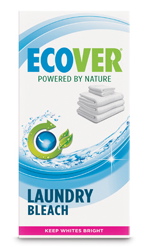
ECOVER produces a bleach containing 5-15% sodium percarbonate. Also contains >30% sodium sulfate,<5% полипептид, глицерин и отбеливатель на растительной основе. Средство не содержит хлора и оптических отбеливателей.
___________________
*** Optical brighteners are chemical components that, instead of cleaning the white fabric of dirt, “stick” to it during washing, visually giving it a white color. In ultraviolet light, such a fabric will glow in a bright white color, which can often be seen in nightclubs or cinema corridors with specific lighting. In fact, not every white fabric will glow like that, but only treated with optical brighteners during production and / or washing, which often negatively affect both the skin, irritating it with its abrasive structure, and the fabric, without cleaning it and promoting the formation of spools.
This is one of the reasons why environmental bleaching and fabric winds have a bad rap. Warning: Perborate is found in almost all common dishwashing detergents. Eco dishwashers use sodium percarbonate and other salts.
Another story is chlorine bleaching or bleaching with so-called "hypochlorite". Chlorine bleach is much more aggressive than hydrogen peroxide, perborate, and sodium percarbonate. It can also eradicate the worst stains like mold, which is entirely justifiable.
Unfortunately, chlorine bleach is so powerful that it also attacks fibers. Even resistant cotton can break down over time. That's why it should be used at all, rarely. On the other hand, oxygen bleaching is called "oxygen bleach". So the next time you read "Don't Use Bleach", you'll know it means chlorine bleach.
___________________
ECOVER whitening powder does not contain such bleaches, besides it is biodegradable and does not harm the environment and water sources, which is confirmed by the relevant certificates. Carton packaging can be 100% recycled.
Nature Clean Liquid Oxygen Stain Remover(about 390 rubles per 1 liter) and powder oxygen stain remover(490 rubles for 700 gr). Made in Canada
In order to achieve a good cleaning effect even at 30°C and 40°C, a bleach activator is added to detergents, which activates sodium percarbonate even at low temperatures. This protects the environment and your fabric winds! Detergents can be roughly divided into three groups.
Oxygen bleach can be found in any detergent, but it can also be purchased separately and dosed into a color detergent. Oxygen bleaching is often sold under the name "stain remover" or "stain remover". Many common salt salts contain fragrances, optical brighteners, and dyes that should be avoided.
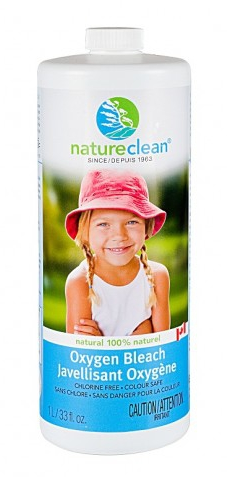
Canadian household cleaning company Nature Clean has two similar products: a liquid oxygen stain remover made from water and hydrogen peroxide, and a powdered oxygen stain remover made from sodium percarbonate and sodium carbonate. Both products are free of chlorine, optical brighteners, petrochemicals and fragrances, and both have Canadian EcoLogo certification. The products are also biodegradable, which is confirmed by appropriate tests.
So there are also differences. Enzymes are high molecular weight protein compounds that help break down substances so they can be used or degraded. The protease can break down proteins such as breast milk proteins, cereals, proteins, egg yolk, blood into soluble fragments. Amylase can break down starch molecules such as grain, porridge, rice into double sugar maltose. Cotton and rayon are also made of cellulose, so it is argued that cellulose should not be contained in cloth wipes. Cellulase breaks down cellulose, that is, the walls of plant cells. . Using a cellulase cleanser from time to time isn't too bad.
KLAR Oxygen bleach hypoallergenic(about 290 rubles / 400 gr). Buy . Production: Germany

The composition of the product includes an oxygen-based bleach (most often it is sodium percarbonate), soda, sodium bicarbonate, sodium citrate, sodium sulfate, sugar surfactants, an activator bleach. Sugar surfactants (surfactants) are surfactants made from sugar cane, i.e. having a vegetable rather than an oil base, which is good.
The cellulase only shaves the fibers in the micrometer range, which disappears little. Cellulase is also a very low dose in detergent. So if you use a cellulase cleanser from time to time when you visit your mother-in-law, your cloth diapers will not immediately dissolve into the air.
The real reason enzymes are so bad is because there was a big enzyme scandal in the 70s. It has been argued that enzyme residues will remain in garments and that they attack the skin, which the skin does not heal well, and that the enzymes cause allergies.
The product does not contain fragrances and dyes, chlorine, enzymes ( compounds that contribute to the effective washing of stains of protein origin - for example, blood; their use causes discussions among manufacturers of household chemicals - approx. ed.), salts of heavy metals, optical brighteners.
One package of 400 gr., which, by the way, is biodegradable, is enough for 14 washes. The bleach has an Ecogarantie certificate and has also been approved by the authoritative German consumer protection magazine Oko-Test and is suitable for vegans.
ALMAWIN Bio oxygen bleach(about 265 rubles for 400 gr.). Production: Germany
ALMAWIN supplies this bleach in two packaging formats - powder in a box of 400 gr. and in a tube of 500 gr., but the composition there is the same: oxygen bleach, soda, sodium bicarbonate, sodium citrate, sodium sulfate, sugar surfactants, bleaching activator. Does not contain phosphates and optical brighteners.
Like our previous version from KLAR, the product is Ecogarantie certified and (in the case of the box) biodegradable packaging with enough powder for 16 washes. The agent begins to work at a temperature of 30 ° C, and it can be used not only for washing, but also for washing dishes.
Despite the environmental friendliness of the composition, the packaging has the inscription "Irritating to eyes and skin, avoid contact."
Soap nuts Eco-friendly oxygen bleach for manual and automatic washing of linen "eco2 Oxygen + Soda" (149-200 rubles per 500 gr.). Production: Russia
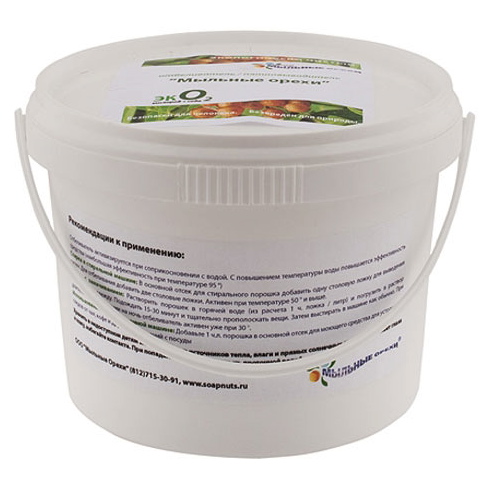
In this case, "Soap Nuts" is the name of the manufacturer's brand, and the product is the expected powder based on the same sodium percarbonate. The agent begins to act effectively at temperatures above 50C, and the greatest effect is achieved at a temperature of 80-90C.
This bleach can also be used in the dishwasher by adding it to the main detergent drawer.
Sodasan Oxygen Bleach(330 rubles for 500 ml). Buy . Production: Germany

The active ingredient of the product is again sodium percarbonate. Bleach does not contain enzymes or chlorine-releasing chemicals. This product has managed to stand out from our range of more or less similar products due to the fact that, according to the manufacturer, it is CO2-neutral, because. Sodasan uses only Greenpeace energy for its production. The product is ECOCERT certified and complies with Ecogarantie and The Vegan Society standards.
__________________
At the end of the review, we say that all oxygen bleaches in their action are approximately the same, since the active substance is one. Pay attention not to the fact that pure sodium percarbonate bleach begins to work actively at water temperatures above 50 degrees Celsius. If additional components are present in the product, then the bleach may be active at lower temperatures. This is usually indicated on the packaging (eg ALMAWIN).
Whichever option you choose, eco-friendly oxygen bleach will enhance the effectiveness of your main laundry detergent in bleaching, removing stains, combating greyness, etc., and is much less environmentally damaging than traditional powders and bleaches. .
Note from the editor:
* In this and all the following reviews, we publish links "Buy here" only to the members of the section WHERE TO BUY BIO.This is the new LookBio policy. Any other active links to online stores on our site are not provided, with the exception of informational partnerships and in cases where the editors consider an active link justified and necessary. LookBio is not a platform for placing free links to online stores, so such links are also removed from comments. Please respect our right to monetize the traffic generated from daily journalism.
